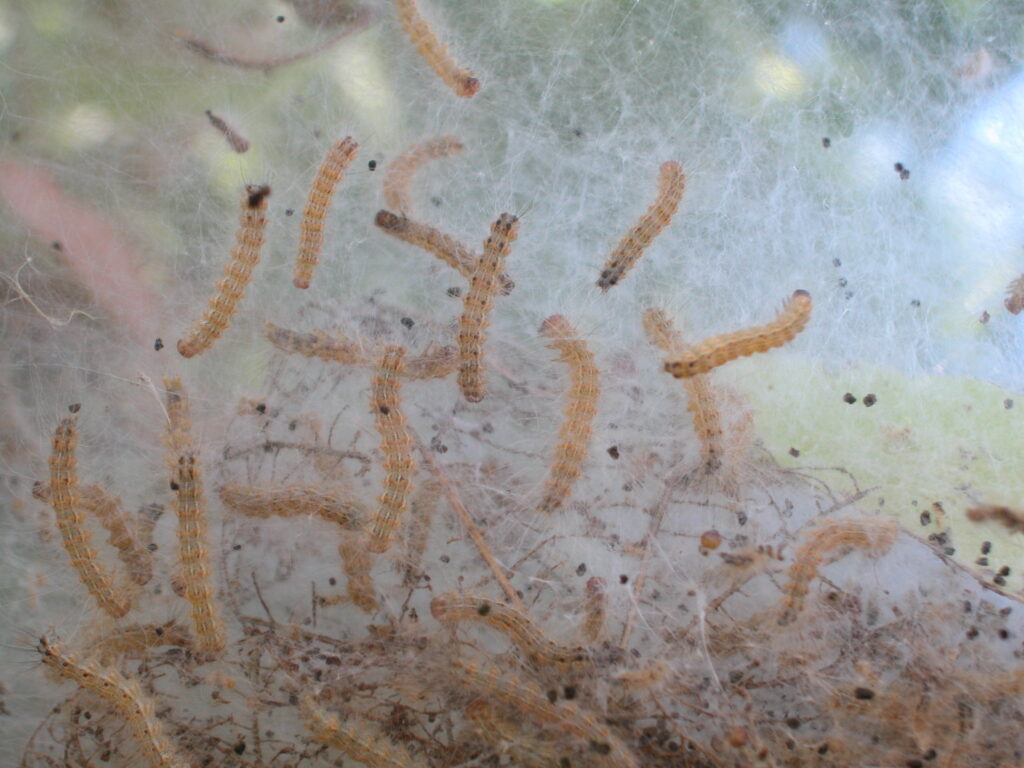Written By: Todd Lanigan, DNR Forest Health Specialist, Eau Claire, Todd.Lanigan@wisconsin.gov or 715-210-0150
As we head into September, fall webworm is starting to make its presence known. This native insect feeds on deciduous trees and shrubs and appears every year in yards and forests. Fall webworm forms loose webbing over branch tips and can completely cover a small tree with webbing. You will find both live and dead caterpillars, partially eaten leaves and frass (caterpillar poop) inside the webbing.

Fall webworm larvae inside webbing. Photo Credit: Wisconsin DNR
As a native insect, fall webworm defoliation is unlikely to cause any long-term harm to healthy trees. It’s more of a cosmetic issue than a tree health problem. If you don’t like the webs in your trees, you can take some simple measures to remove them. The easiest option is to open up the webbing using a rake, fishing pole, long stick, etc. These methods will allow predators to get at the caterpillars inside. Or you can remove the webbing by hand from the branch and place the entire web in a container of soapy water for a couple of days.
Insecticides can also be used to control fall webworms. If you decide to go this route, make sure the insecticide is labeled for caterpillars or fall webworm and penetrates inside the webbing. If the insecticide only coats the outside of the web, the caterpillars will not be affected on the inside. With all pesticides, make sure to read and follow label directions. The label is the law.
Do not prune off branches or burn the nests. Pruning and burning will cause more harm to the tree than the caterpillars will. The webs will eventually break up from wind, rain, hail, etc.
